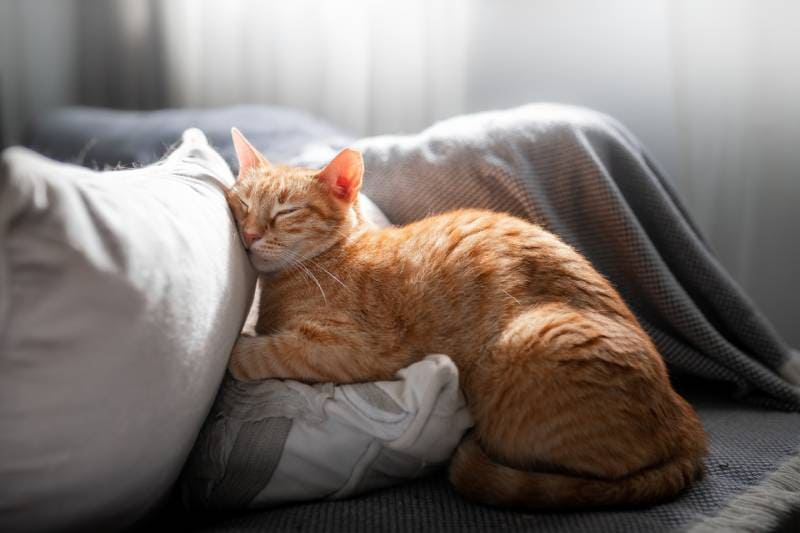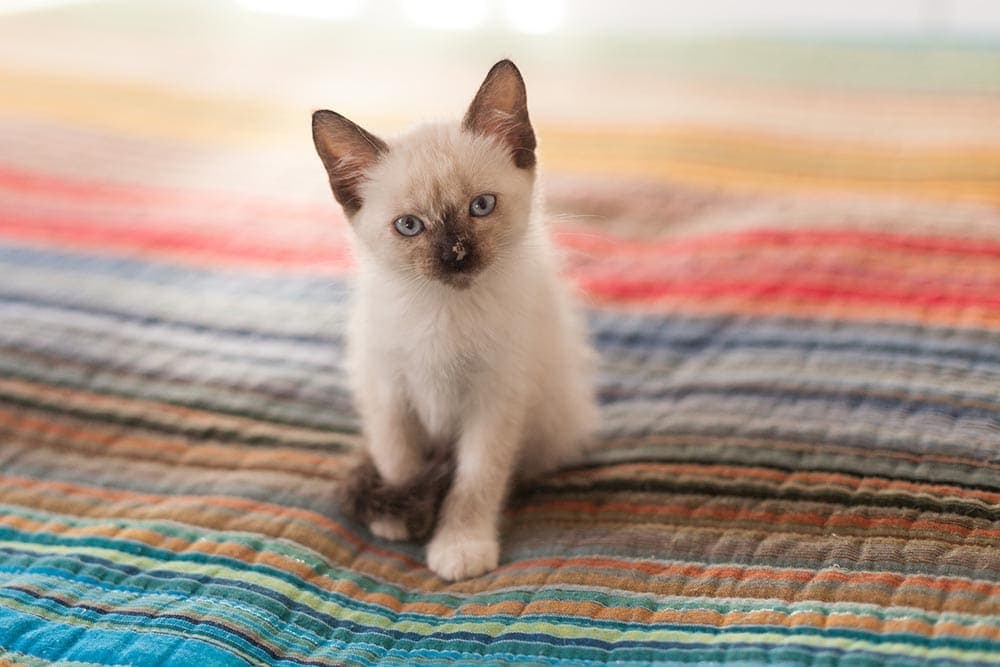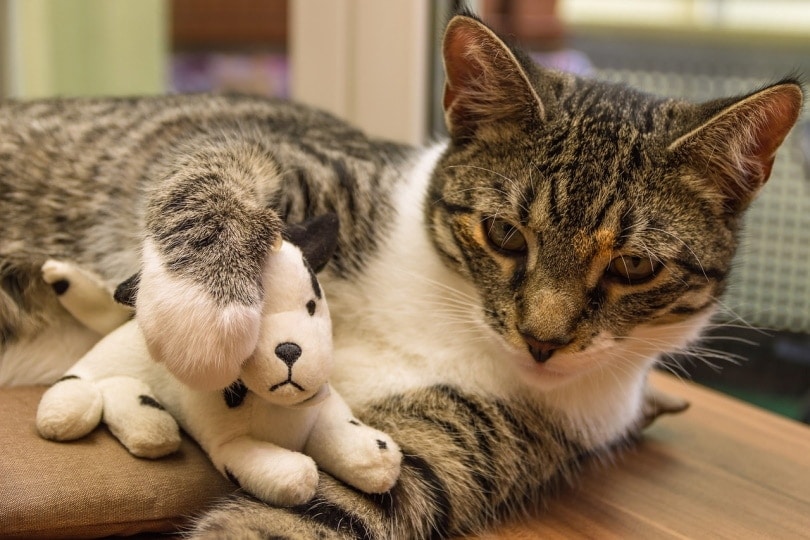Why Do Cats Like Catnip? Feline Facts & FAQs

Updated on
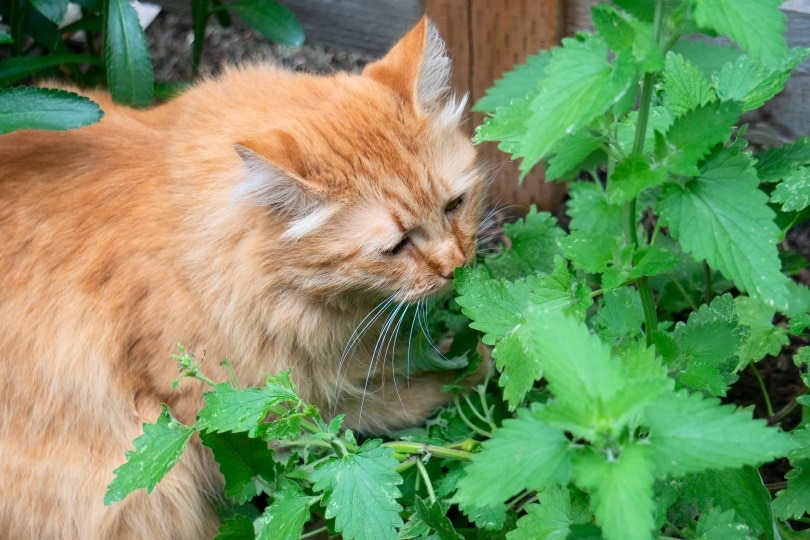
If you have a cat, the chances are you’ve bought your pet some catnip, whether loose or in a toy. It doesn’t take long for its effects to occur. You’ll notice even older pets will roll around, clutching their toy in their paws and acting like kittens. Undoubtedly, there are thousands of videos on YouTube documenting the antics of felines with their nip.
The fascinating thing about catnip is the reason behind the reaction, which is caused by a chemical called nepetalactone. It’s not food, although cats will often eat it. It may have minimal nutritional value. The question is, what is the appeal of what many people may consider a weed?
The Active Ingredient in Catnip
Catnip, or catmint as it’s called in Europe, is part of the Mint family (Lamiaceae) of plants. It includes many familiar aromatic plants, such as rosemary and sage. The scent comes from volatile oils that exist within the plants. Catnip is a perennial plant that typically occurs in a variety of habitats with partial shade and well-drained soils.
Catnip occurs throughout Asia, Europe, and the Middle East. It is an introduced species in North America and is found in the lower 48 states and Alaska, including all the southern Canadian provinces. That speaks to the plant’s invasive nature. It has a square stem, like most mints. Catnip has an unmistakable pungent odor when the leaves are crushed.
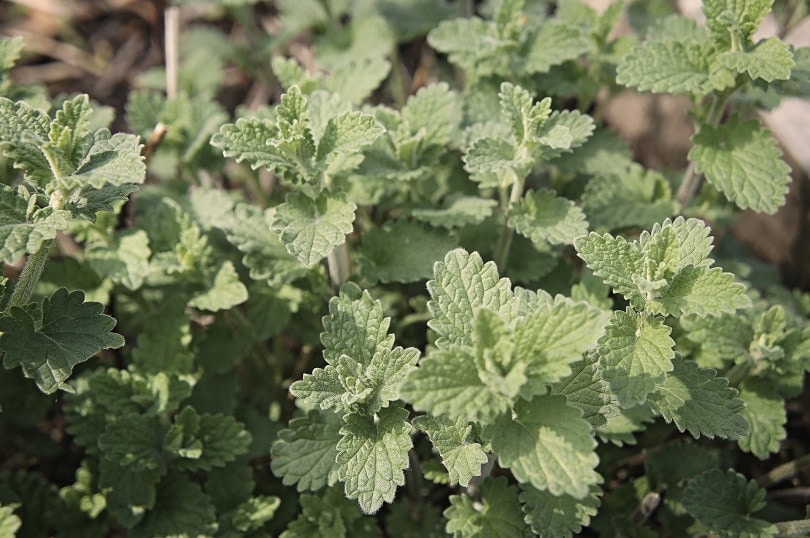
The ingredient that puts the nip in catnip is a chemical called nepetalactone. Scientists theorize that the compound is similar to feline pheromones, which may explain its effects on your kitty. It also acts as a mild sedative which is why your pet may fall asleep after it has had its fill. Its effects are relatively short-lived, with bouts of 15 minutes the norm.
It’s worth noting that not all domestic cats react to catnip. Research suggests that there is a genetic component to the feline reaction. While the plant may induce some sexual stimulation, it doesn’t elicit effects in kittens, which makes sense.
The Appeal of Catnip and Other Felines
The native range of catnip means that many other felines probably encountered the plant in the wild. It turns out that it may have similar effects on these animals. Scientists have recorded strong reactions in various species, including bobcats, lions, and leopards. Interestingly, they behave the same as your cat at home. We can’t help but smile, thinking of the king of the jungle rolling around in the grass.
The responses exist just with felines. Other species, such as rodents and birds, don’t react to nepetalactone, although they may investigate the plant because of its odor. While we know that the active ingredient is similar to pheromones, what else about it attracts cats to catnip? For that answer, we can look at human uses for some clues.

Human Use of Catnip
The folklore contains many accounts of using catnip for various medical purposes. It was a herbal remedy for a number of health conditions, ranging from colic to toothaches to bronchitis. Some people used the dried leaves as a tea to give to restless children to induce sleep. Its uses didn’t escape the 1960s generation, who used it as a marijuana substitute, even buying toys to get it.
We can conclude from this anecdotal evidence that perhaps cats like catnip just because it makes them feel good. However, science has uncovered another use that may prove beneficial to both humans and felines. Research by the American Chemical Society has found that nepetalactone is 10 times more effective at warding off mosquitoes than DEET, without the potential side effects.
Catnip is also useful for repelling other pests, such as cockroaches, termites, and stable flies. Perhaps, it does the same service for cats when they roll around in the plant. Many consider mosquitoes the most deadly organism on the planet because of the many diseases they transmit to humans and animals, including yellow fever, West Nile virus, and canine heartworm.
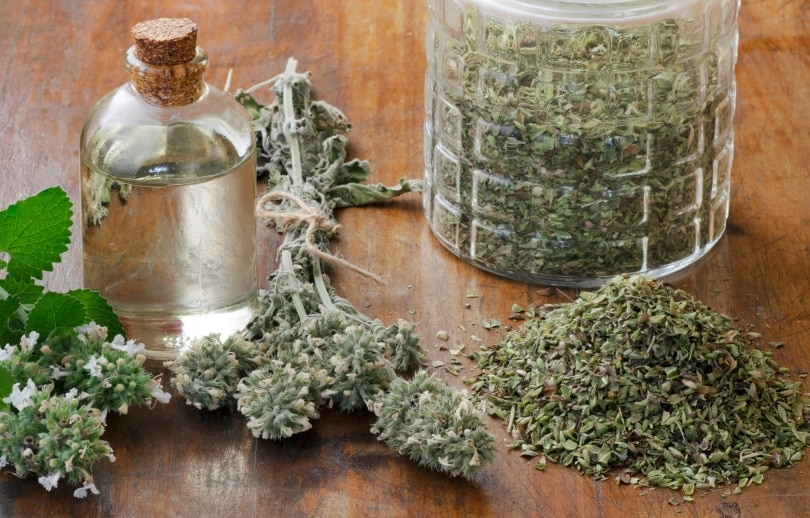
Tips for Giving Your Pet Catnip
It makes sense that as a pet owner, you’d want to give your kitty something that will make it happy. Catnip certainly fits the bill. If it offers other benefits, it’s an even better choice. You’ll find it in several forms, loose, grass, and filled toys. You can even grow it in your backyard. However, remember that it is an invasive plant that will spread quickly.
If you use loose catnip, it’s helpful to keep the container in the freezer. The potency will diminish rapidly since the active ingredient is a volatile compound. If you opt for toys, we suggest checking them periodically. An overzealous kitty may tear them apart to get at the catnip inside of them. Torn pieces present a risk for life-threatening bowel obstruction.
We suggest using catnip as a treat and a way to bond with your pet. Your feline companion will appreciate its effects.
Conclusion
Catnip and felines go hand in hand. The plant provides a pleasurable experience for many cats, both large and small. It may also give them some welcome protection against mosquitoes and flies that can make life miserable for them. Its mosquito-repelling properties are enough to consider sprinkling some in your garden or growing them in your backyard for a DIY pest solution.
Featured Image Credit: Badon Hill Studio, Shutterstock
